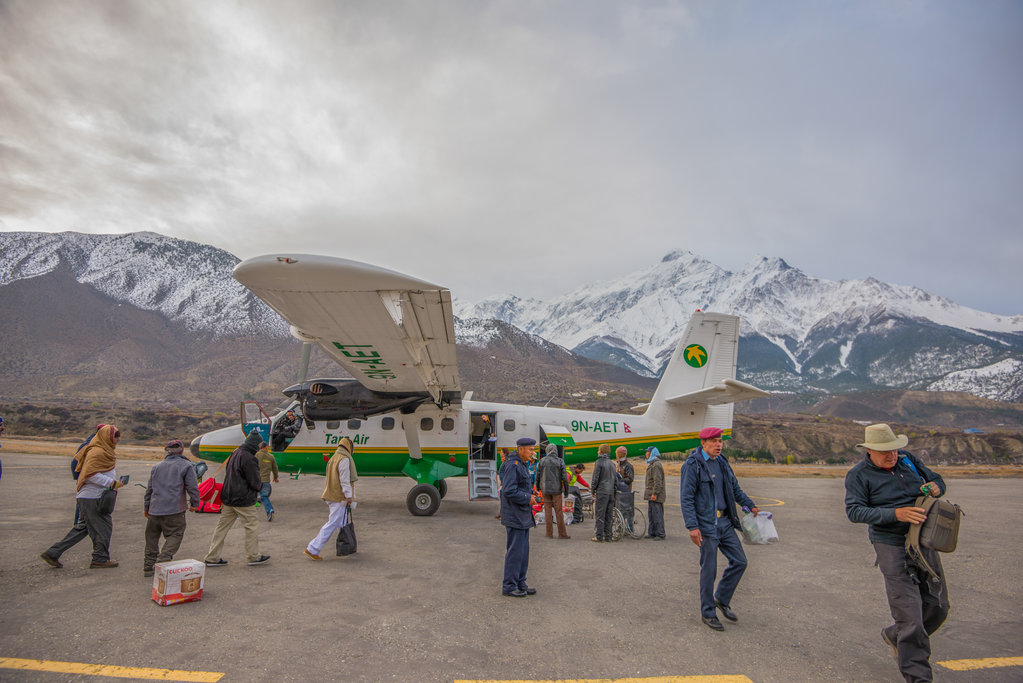Highlights
- Trek into some of the most remote areas of Nepal, rarely seen by foreigners
- Explore the spectacular world of "Sky-Caves" high above the valley floor
- Enjoy a "boutique" style of trekking, with a signature dining tent and library
- Meet the amazing people of Mustang and learn about their way of life
- Join world-renowned Mustang expert, Kim Bannister, and learn the intricate details of this mysterious former kingdom
Chat with a local specialist who can help organize your trip.
Brief Itinerary
| Day | Highlights | Overnight |
|---|---|---|
| Day 1 | Welcome to Kathmandu | Kathmandu |
| Day 2 | Explore Kathmandu | Kathmandu |
| Day 3 | Fly to Pokhara | Pokhara |
| Day 4 | Fly to Jomsom; Trek to Kagbeni | Kagbeni |
| Day 5 | Trek Tsaile | Tsaile |
| Day 6 | Trek Syangboche | Syangboche |
| Day 7 | Trek Dhakmar | Dhakmar |
| Day 8 | Trek Lo Monthang (visit Lo Gekar) | Lo Monthang |
| Day 9 | Day trek to visit Chosar & Thinggar Valleys | Lo Monthang |
| Day 10 | Trek to Yara | Yara |
| Day 11 | Day trek to visit Luri Gompa & Tashi Kabum | Yara |
| Day 12 | Trek to Tsarang | Tsarang |
| Day 13 | Trek to Geling | Geling |
| Day 14 | Trek to Samar (via Chungsi Caves) | Samar |
| Day 15 | Trek to Chusang; Drive to Jomsom | Jomsom |
| Day 16 | Fly to Kathmandu via Pokhara | Kathmandu |
| Day 17 | Depart Kathmandu |
Overview
Situated in the rain shadow of the Dhaulagiri range, Mustang is one of Nepal's most diverse and spectacularly beautiful regions. Sculpted canyons and fantastic rock formations, traditional, white-washed Tibetan-style villages, crumbling fortresses, royal palaces, unexplored cave complexes, Tibetan Buddhist monasteries and Himalayan snow-peaks characterize this spectacular region, a thumb sticking up into the Tibetan plateau.

Ancient caves high in the Mustang Himalaya hold secrets from past centuries; adorned with Tibetan Buddhist murals, sometimes containing bleached human bones or weatherworn Tibetan scripts on ancient parchments held in place by carved and worn wooden covers, these caves are unique to Upper Mustang.

Many of Mustang’s Buddhist ‘sky caves’ are now nearly inaccessible, carved into eroded cliff sides high above the deep Kali Gandaki riverbed, their evocative murals mostly exposed to the elements. Reaching some of these remote caves requires a local guide, trekking along razor-edge, cliffside trails and sometimes even fixed ropes.
Upper Mustang is an otherworldly former kingdom, once part of Western Tibet, the Lo-pas still claiming their Tibetan Buddhist heritage. Their dwellings are pure Tibetan, whitewashed house protected by animistic ‘zors’ made of sheep skulls, muslin cloth, wound tight with local wool threads.
The monasteries of Lo Monthang (called ‘gompas’ in Tibetan) are painted with some of the most detailed and exquisite murals of anywhere in the Tibetan world, and hold some of the Himalaya’s most valuable statues and relics. A visit to these monasteries is a step back in time.
Although the name Mustang isn’t related to the renowned horses, Mustang is also famed for its robust horses, and the Mustangi king, or Gyalpo, is an avid horseman himself. Blue sheep, ibex, snow leopards and other wild animals also dwell in this rugged region, able to scale nearly impossibly steep and exposed cliffs.

Mustang is survived on roasted barley flour (tsampa), milk and cheese products, potatoes and the occasional bit of meat until recently when the Nepali dal baht was introduced and has since become another staple of their diet.
The ‘last nomads of Mustang’ reside in their yak-haired tents in the north of Upper Mustang, transmigrating to several high grazing areas during the year, weaving intricate and colorful blankets and carpets during the harsh winter months. Their life is much as it’s been for centuries, even millennium, except for their newly acquired mobile phones connected to the Lo Monthang mobile network.
Roads are making headways into Upper Mustang, but it's still possible to trek along timeless trails to some of the remote Mustangi villages virtually unvisited by Western tourists. The best way to visit Upper Mustang is to camp, providing the opportunity to visit villages and parts of Upper Mustang where there are no lodges, and the trails aren’t well worn by trekkers or vehicles. Upper Mustang’s more remote trails are breathtakingly beautiful, looking down on the green oasis of traditional Mustangi villages, their green fields of barley swaying in the Kali Gandaki breezes … A piece of old Tibet!
